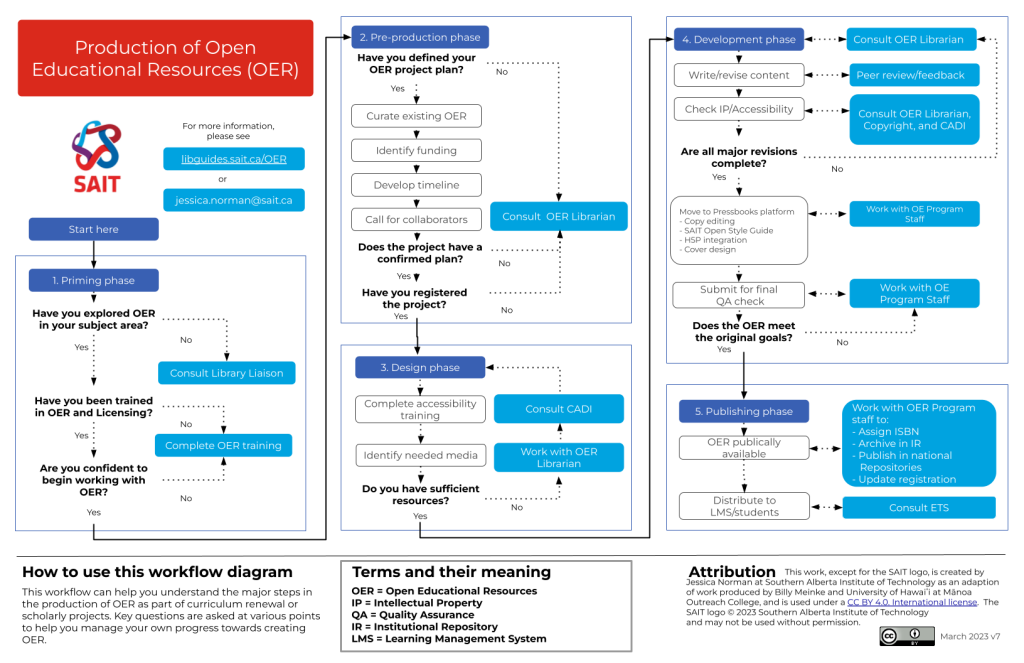4 Planning and Completing an OER Project
Learning Objectives
By the end of this chapter, you will be able to:
-
- Describe the services and departments that support publishing an OER.
- Summarize the benefits of publishing within this program.
- Create a customized publishing workflow for a potential project.
Each OER project is different and rarely is an OER adoption a turn-key process. While OER textbooks exist for many high-enrollment courses, the need for alignment with pedagogical design (or teaching style) and student population will typically require a work to be adapted. Other technical and specialized topics may require creation of a new OER, as there is limited resources currently available.
OER PRODUCTION WORKFLOW
The following OER production workflow[1], based on an instructional design framework, depicts the major steps that OER adaptions or creations typically go through:

Priming phase
This step is all about gauging your knowledge and experience with OER. Consider whether or not you have explored OER in your subject area before. Prior to planning the creation of new OER, ensure that you have looked into other subject-specific OER to see if there are any that may be adapted to fit your needs– this may save you a lot of time in the future. If this is your first experience with OER, look into any workshops, training, or contact the Reg Erhardt Library for information on basic OER training.
Pre-production phase
Planning is a vital part of creating a successful OER. Making a general timeline and design for the workflow of the project is important to ensure that you stay on track and have a realistic idea of how long OER creation and adoption may take. At this phase, ensure that you are simply planning. No new content should be created. This is also a great time to schedule a consultation with the OER Librarian to learn more about available supports.
Design phase
This step follows very closely to the pre-production phase. It focuses on adapting existing OER to fit your project, and expanding out project outlines or lists of any additional documents that may be created. The identification of needed visuals and graphics should also be included in this phase of production.
Development phase
If you are creating new OER, this phase will likely be the most time-intensive, as it is in this phase that you will begin building new materials. If you are simply adapting existing OER, this phase may just involve the creation of instructional documents to accompany your adapted resource. As well as building new materials, this phase also involves the editing and revision of new and existing resources. Ensure you are also checking you have appropriately attributed all outside resources that have been used, and that you have made content as accessible as possible.
New content may be drafted in platforms such as Google Docs or Word, before being exported onto open platforms for dissemination, such as Pressbooks.
Publishing phase
The final phase involves publishing and sharing the content that has been created. This includes working with OER program staff to develop metadata for the work, creating export versions, and publishing editable files for instructors who might wish to edit your work (.doc, .xml, etc). The OER content is then disseminated to learners and shared with the open community.
- Production of Open Educational Resources was adapted from Scoping an OER Project by Billy Meinke, licensed CC BY 4.0. ↵

